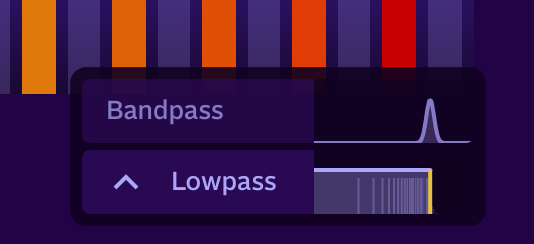
Is a synth still a synth without a lowpass?
Additive synthesizers tend to be harsh and bright. For an additive, Sine Machine does a lot behind the scenes to avoid creating a piercing mess of high frequencies.
Close to the end of the signal chain, we also provide filters.
Additive filters?
Like other effects in Sine Machine, the “filters” aren’t typical audio effects. Instead they directly filter or reduce the harmonic volumes.
Sine Machine’s filters operate on the harmonic volumes before they are fed into the oscillators. This allows for smooth interpolation between 0db-per-octave reduction and brick wall 64db-per-octave reduction.
There’s no phase shift normally associated with normal filters, no pre-ringing artifacts or limitations on filter shape.
Filter Parameters
There are two parameters
Filter Cutoff (x axis) and Filter Slope (y axis)
For example, for the lowpass:
The Filter Cutoff tells the engine “when a harmonic is above this frequency, make it quieter”
The Filter Slope is how fast harmonics above the cutoff will trend towards 0 volume. It ranges from 0 to 64db.
When working with subtractive/wavetable synthesizers, you might key-track the lowpass’s cutoff to let in more high frequencies when you play note higher on the keyboard. In an additive synth, you’d just turn down the harmonic volumes to get the same effect. That’s the default out of the box for an additive synthesizer, no lowpass needed.
Leave a Reply